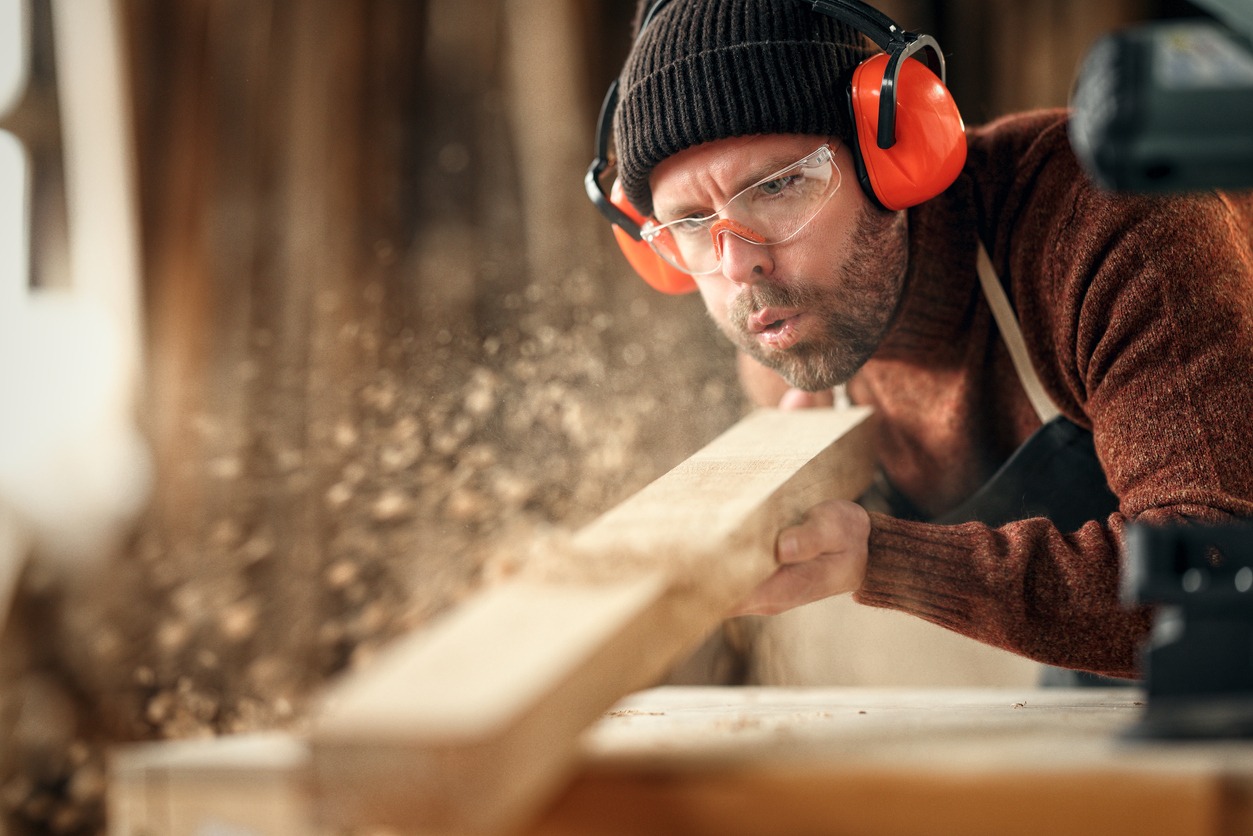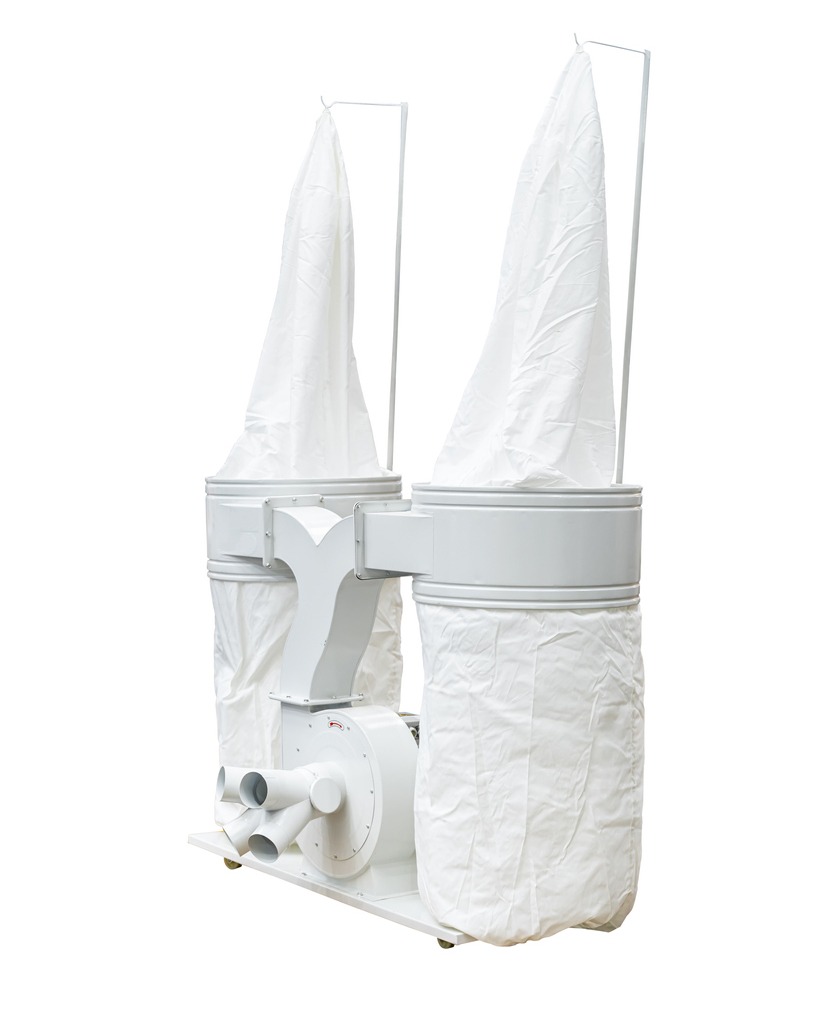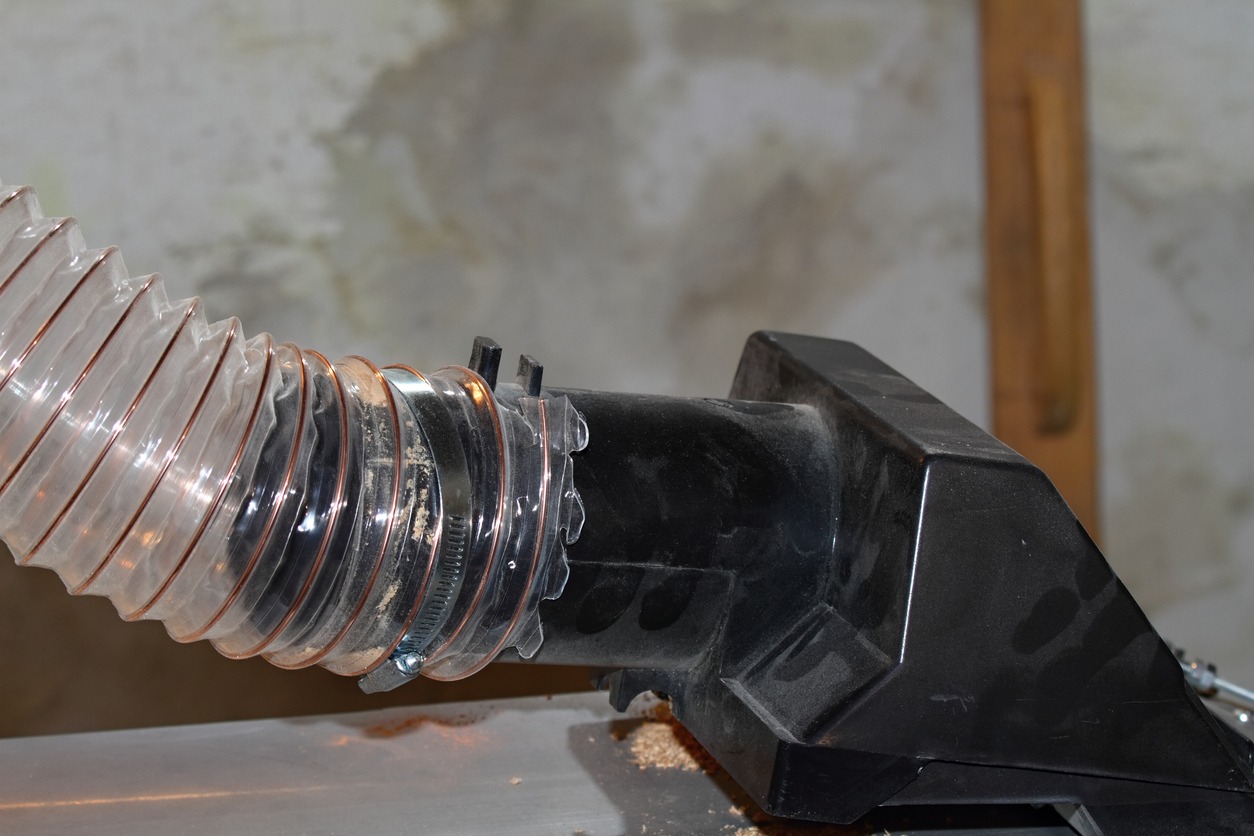Woodworking and working with other materials such as metal, and other DIY projects have one thing in common: the mess it leaves behind. Dust and debris is unavoidable as you grind, cut, and sand these materials. Besides getting everywhere, including your workpiece, the dust and fine particles from these materials are documented health hazards.
Long term exposure to sawdust and metal dust has long been correlated with various adverse effects, including dermatitis, several respiratory problems (allergic or non-allergic), and even cancer. That’s why it’s highly recommended that you should invest in a good dust collector to effectively suck in the dust and debris as you work.
But choosing this essential woodworking power tool is anything but simple or easy. There are a lot of things to figure out while choosing a good dust collector – determining airflow charts and cubic feet per minute and so on. But with the right dust collection system, you will be able to turn your working environment into a cleaner, safer and healthier place not just for you, but your entire family as well.
What is a Dust Collector?
A dust collector is a machine designed to remove dust and debris from the air, making your workshop cleaner and healthier. You can think of it as an air purifier for DYIers, hobbyists and professionals. The difference is that a dust collector comes with a hose attachment that connects to various power tools, providing consistent suction to pull in dust and debris that are created during the process.
The device sucks the air from the tool you are using and passes it through a filtering system. This system traps and removes the particulate matter which is then deposited into the collection bag or area from where you can safely dispose it off.
Types of Dust Collectors?
The dust collectors currently available on the market range from smaller models designed to work in most home shops to large equipment suitable for an industrial set up. Let’s explore them in more detail:
Standard Shop Vacuums
Standard shop vacuums or shop vacs are small appliances that come with a hose attachment. You can connect these with the dust collection outlet on various power tools. They are the least expensive type of dust collection system and are useful for light sawdust collection.
Single-stage Dust Collector
Single-stage dust collectors generally feature a blower and two filter bags, stacked on top of one other. One bag collects the bigger debris such as wood chips, while the other bag gathers the finer sawdust, as wood debris is being sucked into the machine.
Two-stage Dust Collector
A two-stage dust collector features a drum-and-bag configuration. As the air is drawn into the machine, the bigger debris settles into the drum. The finer dust, on the other hand, is collected into the filter bag through a rotating device called the impeller.
Dust Extractors
These are the simplest dust collection equipment designed to work with small hand tools.
Cyclone Pre-collectors
A cyclone pre-collector is characterized by its funnel-shaped tube, which whirls and separates wood debris. The bigger debris settles into a waste container, while the finer particles are blown into the filter bag.
Ambient Air-cleaners
An efficient dust-collecting equipment, the ambient air-cleaner catches sawdust that is too microscopic to be trapped by regular dust collectors. The air is drawn in and goes through several filters, where the microscopic dust is collected. The cleaner air then circulates back to the area.
Buying Considerations When Choosing a Dust Collector
Woodworking is an enjoyable and rewarding hobby, but it can create a lot of fine dust. A good dust collector can make the job easier, safer, and cleaner – and can even save you money in the long run. But not all dust collectors are created equal, and you’ll want to make sure you get the best one you can find for your needs and budget. Here is how you should choose one:
Airflow Rate
Airflow rate is measured in CFM (Cubic Feet per Minute) and is an important factor when determining the right dust collector for your woodworking shop. CFM is a measure of how much air a dust collector can move in a given amount of time, so look for one that is able to handle the amount of air you need for your shop—plus some extra to ensure adequate performance. Consider the size of the space you’ll be using the dust collector in, as well as any other machines or air exchangers you’ll be running at the same time, and make sure your chosen dust collector can handle it all.
Filter Cleaning
Another key feature to look for in a dust collector is how easy it is to clean its filters. Many dust collectors feature an automatic cleaning system that uses compressed air to blow out collected particles and dirt. Others require manual cleaning of their filters—which can be tedious and time-consuming if you’re working frequently with dust-producing materials. Ask yourself which would be more convenient for your shop setup and workflow before making a purchase decision.
Noise Level
Noise level is an important factor if you plan on using your dust collector in any shared spaces, such as a home workshop or similar environment. Consider how much noise it will produce when running, as this could affect neighbors or others around you. Generally speaking, noise levels should be kept below 70 decibels when possible; many manufacturers provide noise level ratings for their products so you can easily compare them and choose accordingly based on your preferences.
Bag or Canister Capacity
How much material can your dust collector store before needing to be emptied or replaced? This will determine how frequently you have to empty and/or replace the container; look for an option that provides ample storage capacity, so that you don’t have to constantly stop what you’re doing in order to empty it out.
Size
Consider both machine size (width x height x depth) as well as shape and size of all accessories such as hoses and fittings before making a purchase decision. Take into account where you want to use it and whether your workplace has enough room for it or not otherwise, it might obstruct other areas of your workshop.
FAQs
What type of dust collectors are used in woodworking?
The most common type of dust collectors used in woodworking are bag-style systems, which use a filter bag to capture the sawdust and other debris.
How much does a dust collector cost?
The cost of a dust collector can vary greatly depending on the brand, power and features you choose. Entry level models start for around $200, while high end models can cost up to $2,000 or more.
How often should I clean and maintain the dust collector?
Generally speaking, you should clean out the filter bag or cartridge filter at least once every month or two depending on usage frequency and how dusty your environment is. Additionally, if you notice any clogs or blockages within the system, these should be addressed on an immediate basis.
What is the best way to set up a dust collection system?
Setting up a proper dust collection system involves a few steps such as:
- Determine what type of system works best for your shop layout and tools.
- Select an appropriate filter size based on the amount of chips and debris generated by your tools.
- Purchase necessary parts including hoses and fittings.
- Install fans and vents where needed
- Attach hose segments together following manufacturer instructions.
- Set up hoses so they don’t kink or sag when running tools.
- Test out the system once complete to make sure it’s operating efficiently without leaks or blockages.
Are there any safety precautions I should observe while using a dust collector?
Yes! Make sure to always wear safety glasses when working around the system. It is also important to follow manufacturer’s instructions regarding maintenance and operation procedures. Keep children away from moving parts such as fans and belts. Place hoses correctly so they don’t interfere with other equipment. Lastly, make sure all electrical components such as motors have been properly grounded before attempting any repairs or modifications to the system itself.
Conclusion
Saw dust and other particulate matter poses a significant threat to your health. A dust collector is essential in protecting yourself from potential hazards. It sucks in the fine particles, so none of it finds its way inside your body. It also prevents your shop from becoming a total mess by collecting chips and shavings as you work with wood or metal.



